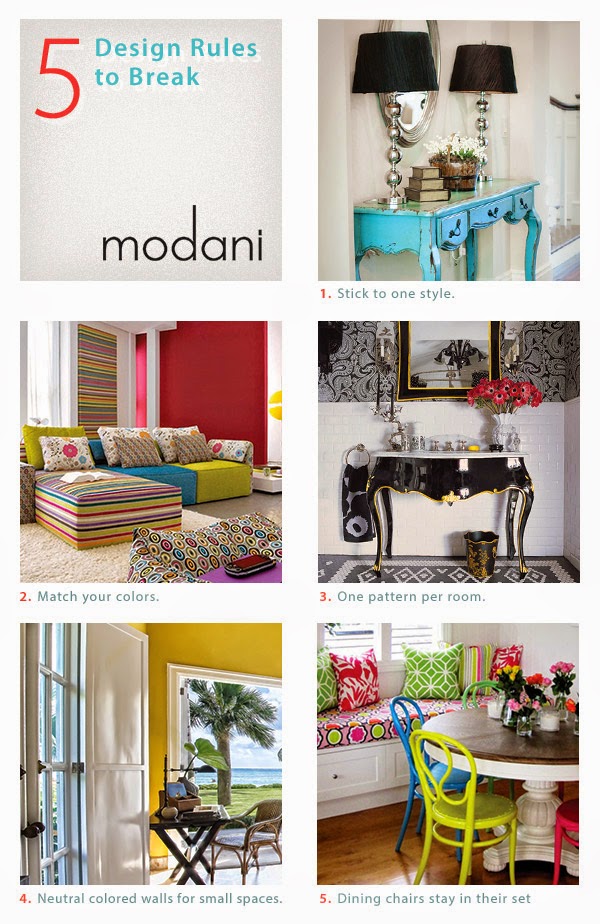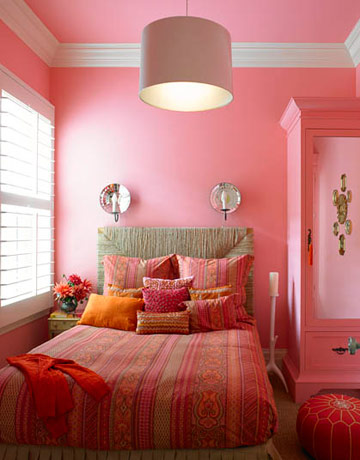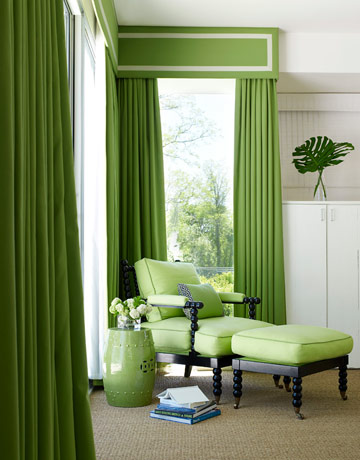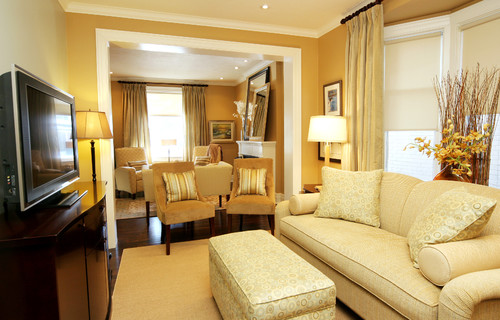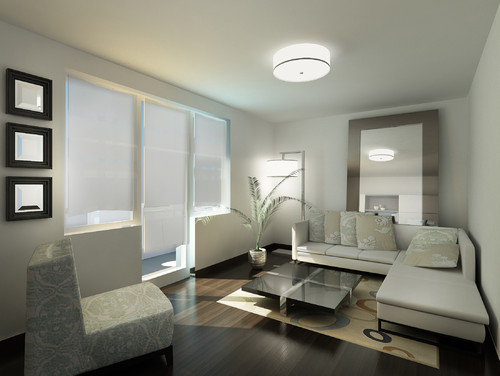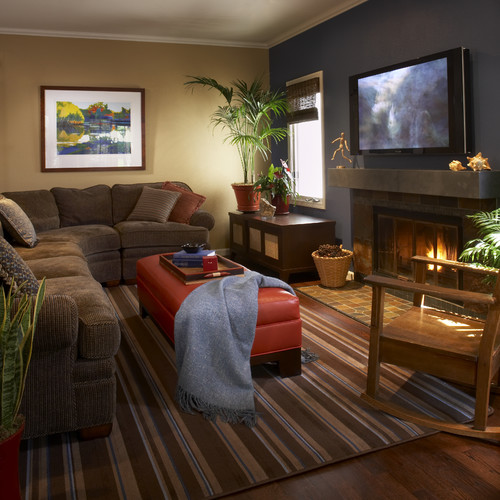 |
| Liz Levin Interiors |
This room has a lot packed into a very small space. Just imagine this space with a matched dining set. It would blend into the floor and be totally blah. How did the designer achieve this look? Perhaps there's something in her kit of tricks that you could use.
Upholstered chairs
If you have a dining table you love, and hate the chairs, consider changing them to coloured leather or fully upholstered ones. It helps break up all the wood that you tend to get in dining rooms. This approach usually means you can get away without the area rug that many people have to resort to so their set doesn't disappear into a similar wood floor.
Mixing styles
I know this isn't for everyone, but if you like a more curated rather than matched look, it's the way to go. The days of sets are long gone.Contrast
Nothing attracts the eye better than contrast. It is a design fact. If you want a more neutral space without it being boring use contrast widely. The dark table, cream chairs, and white and brown draperies work so well together. Reusing the cream in the centrepiece adds another contrast point.Pattern
I'm a big believer in using pattern to add interest to a space. The geometric pattern in these drapesmimics other shapes in the room, both circles and rectangles. The colour scheme is replicated in the drapes. The drapes also provide what I like to think about as destination viewing- a spot for your eye to seek in a room and rest before moving on. Pattern is often the bow that ties up a space.
Mirrors
A mirror goes a long way to enlarge and add interest to small places. Personally, I like a framed mirror where this one appears to be adhered to the wall. Don't be afraid to go large when you hang a mirror in a dining space. A word of caution. Check what is reflected in it. Perhaps it might be something you would rather not draw attention to.Living things
And most importantly this space has living things in it. There is nothing like plants and flowers to add a dynamic touch to any space.Texture
While this is a small space it is packed with subtle textures and sheens: wood, glass, pottery, weave in drapes, and plants. Texture is the most overlooked design element in many spaces. If your own space looks blah maybe adding some texture will help.Fine craft
I like the form and texture of the vases on the table. While I don't know for sure they look like fine craft. Nothing is more boring than a room full of "accessories" from big box stores. There's so many unique, hand built objects in every city and town. I contend it is more interesting to have one or two interesting objects than a house full of mass produced stuff. You may disagree.
All of these elements work equally well in a small space or a large space.
And here's a space to check out to see if any of the points I mentioned above are present. It's isn't a small space, but you will see a lot of the same elements and principles applied.
 |
| Blackband Design |
Lots of points to consider and possible some you might like to play around with. What are your strategies to create a "large" room?













